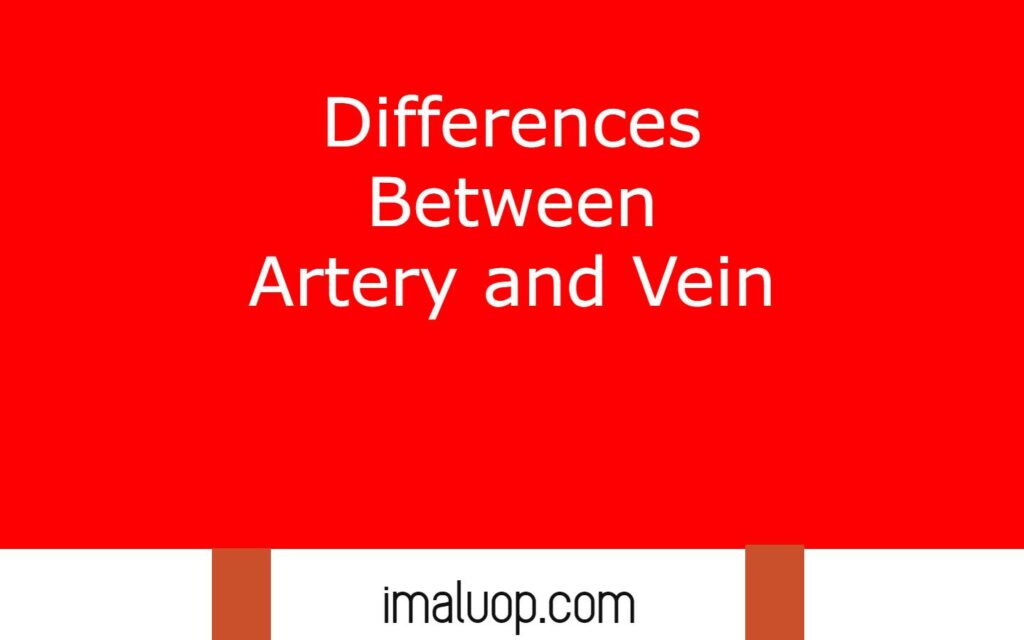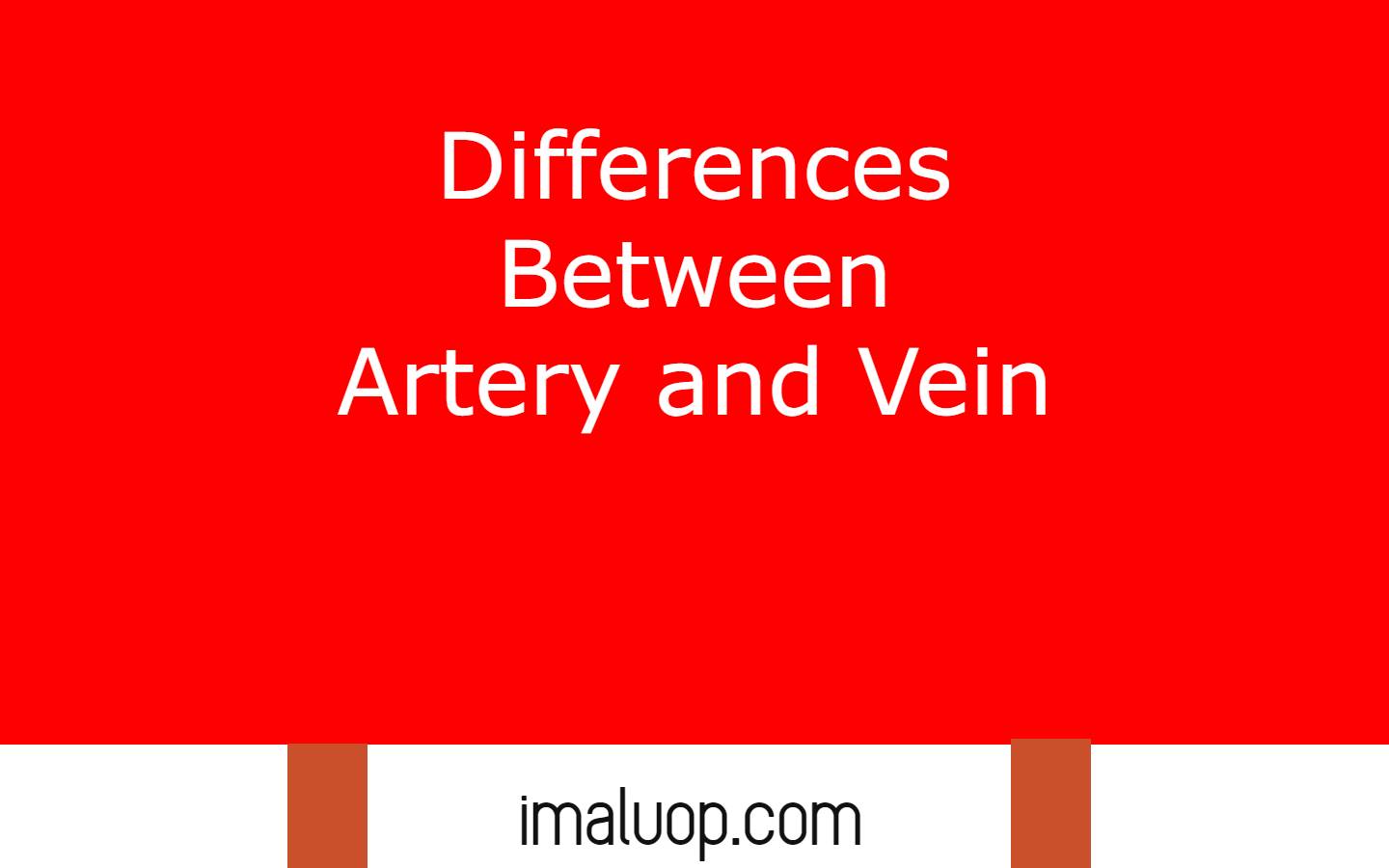We know that our circulatory system has different types of blood vessels, arteries and veins and the network of capillaries which join the arterial system with our vein system but now we will discuss the major differences between artery and vein.
Major Differences Between Artery and Vein:
| Artery | Vein |
| Artery is generally known for transporting oxygenated blood through our body but all arteries do not carry oxygenated blood, pulmonary artery is an artery which carries deoxygenated blood instead of oxygenated blood. | Veins generally carry deoxygenated blood but here also present an exception where veins do not carry deoxygenated blood instead carry oxygenated blood like an artery which is observed in case of pulmonary vein. |
| The Walls of the artery have three layers but the layers are different from that of the vein because they are thick and muscular. Thick and muscular wall of artery is necessary to tolerate the high blood pressure inside the artery due to pumping activity of the heart. | Wall of the vein also has three layers like an artery but the layers are much thinner than the wall of the artery and its wall is not muscular as that of the artery wall. |
| Most of the major arteries and minor arteries present in our body deeply as compared to the position of the vein. | Arteries present superficially near the skin and do not present much deeper like arteries. |
| Arterial blood is red in appearance because arterial blood is much oxygenated so it has a large amount of oxygenated haemoglobin so that it is deep red in colour. | In vein blood colour is not deep red as that of arterial blood become veins that do not contain oxygenated blood so it seems blue in colour. |
| As we know that all arteries do not carry oxygenated blood so we can not define arteries as the blood vessels which carry oxygenated blood. If we want to define arteries in a better way then we should say that the vessels which carry blood from heart to different body parts are arteries. | Same logic is also applicable for veins and we can not say that the vessels which carry deoxygenated blood are veins, instead we should say that the vessels which carry blood from different body parts to heart are known as veins. |
| Blood pressure in an artery is much higher than the blood pressure inside a vein because the blood flows inside the artery by the pumping activity of the heart. | Blood pressure is very low in the vein as compared to the blood pressure of the artery because blood flow inside the vein does not occur due to heart pumping, instead here capillary actions are responsible for blood flow inside the vein. |
| As arteries carry oxygenated blood so arterial blood have high oxygen level while carbon dioxide level in arterial blood is lower than vein but pulmonary artery is again an exception for this statement. | Veins carry deoxygenated blood so vein blood oxygen level is lower than arterial blood and carbon dioxide level in vein blood is higher than arterial blood, again pulmonary vein is an exception here. |
| Artery lumen is much narrower than the lumen of the vein because thick muscular walls of artery and valve are absent in artery. | Veins have much wider lumen than the lumen of arteries because the wall in the vein is less muscular and thin and valves present at regular intervals create a pumping activity inside the vein to prevent backward flow of blood inside the vein. |
| Some diseases in arteries like angina pectoris, atherosclerosis create life threatening conditions because arteries are responsible for transporting oxygenated blood to different tissues and blood pressure in arteries is very high. | There are some disease related vein like varicose vein but they are not life threatening in general. |

Read More: Types and Causes of Arthritis
Hi Everyone!!! Welcome to Imaluop. Imaluop always try to learn some new and he want to share to other people. Here we will try to learn various topics on Science, specially on Biological Sciences.
